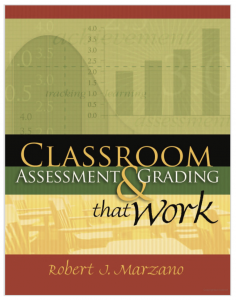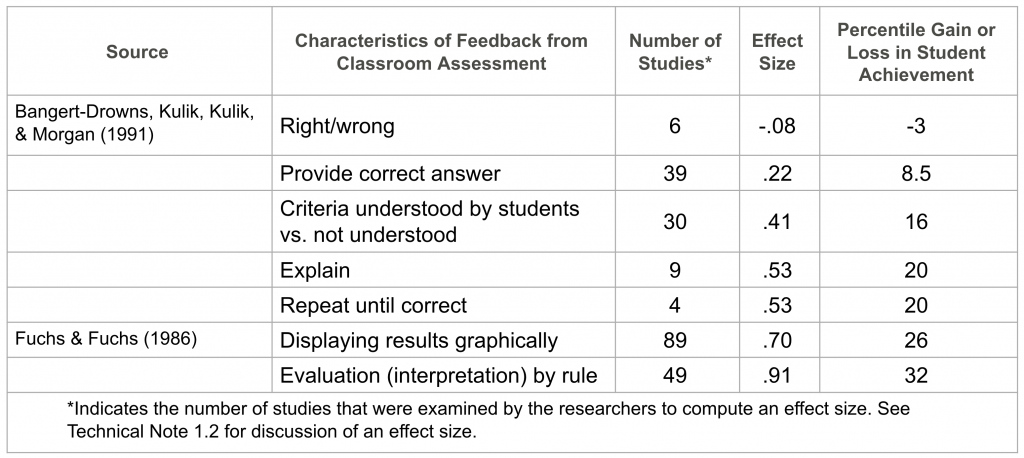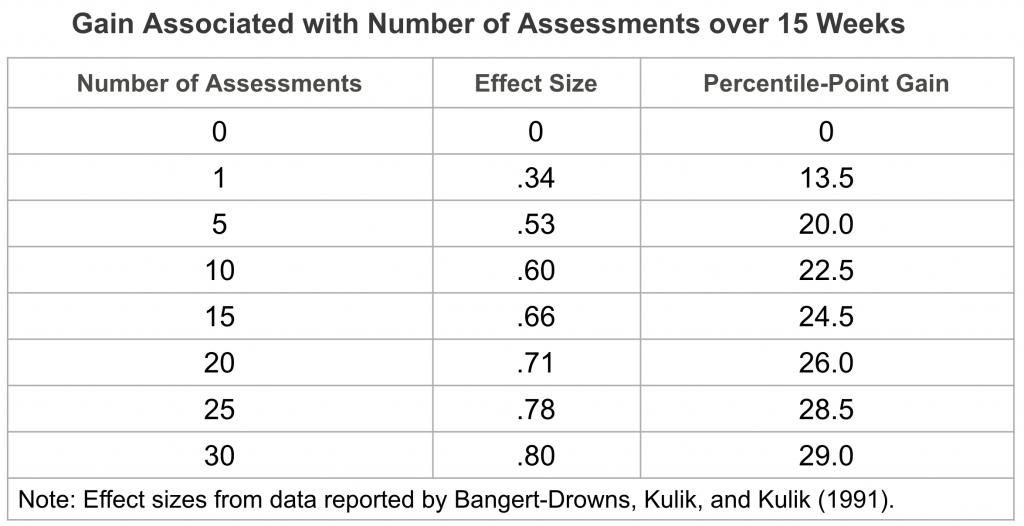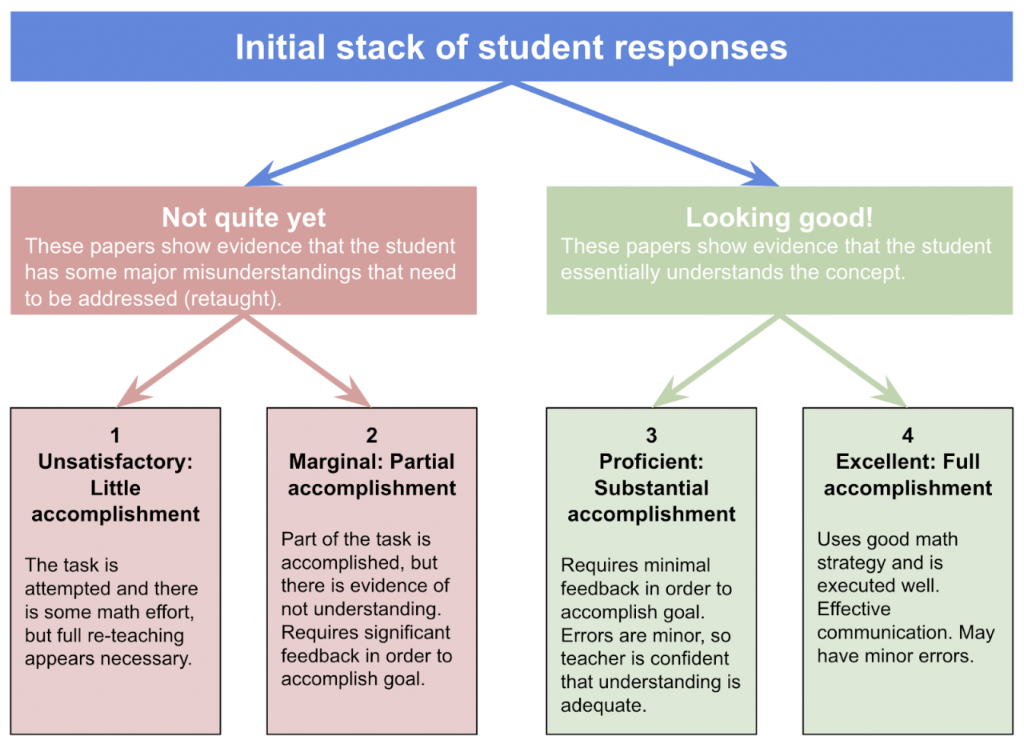We have long known that the most important aspect of schooling affecting student achievement is the effectiveness of the teacher in the classroom (Wright, Horn, & Sanders, 1997). So then, what exactly do effective teachers do? Two well-known people, Hattie and Marzano, have long thought about this very question. Both have created long laundry lists of instructional strategies and organizational structures that contribute to the learning of a student.

With respect to increasing student achievement, assessment is one of the least discussed – but, most powerful – strategies a teacher should have in her tool belt. Discussions around assessment often center around giving grades, report cards, and conflicts with parents. While those are important things to consider, it is more important that teachers understand that assessment – when done effectively for reasons OTHER than posting grades on a report card – can improve learning.
This blog post will discuss a powerful protocol for assessing student understanding in a humane, non-math-anxitey-provoking way, that increases student learning, AND provides powerful data that can be used to report grades to parents. It is is inspired by Marzano and his book Classroom Assessment & Grading that Work. We call this assessment technique the Perfect Quiz Protocol.
We know from the work of Hattie and Wiliam that the feedback provided to the student by the teacher has profound implications on student learning. But, not all feedback is equally effective. From chapter 1 of Marzano’s book, we see that the effects of feedback varies widely – from highly effective to no effect or even harmful.

In addition to the type of feedback, the frequency of the assessments also has a profound impact on student achievement. Counterintuitively, students would benefit from an increase in the frequency of assessments, rather than a decrease in assessment experiences. For most teachers, this is counterintuitive and is an absolute affront to the adage of testing so frequently that we never teach!
Again, from Marzano’s chapter 1, in a 15-week course, a student who experiences a weekly assessment will gain significantly more than a student who is assessed only once in that same time frame.

Given that the type of feedback matters and the frequency of the assessments matters, what then shall we do?
The answer: The Perfect Quiz Protocol
The Perfect Quiz Protocol is a twenty- to thirty-minute routine in which students complete a short quiz with embedded supports from the teacher. At the end of the routine, all students finish with a completed perfect quiz and the teacher has the necessary data for reporting and acting on the progress of each and every student.
Let’s go into detail…
- Teacher conducts a quiz which is short in length – about 2 to 4 questions. The quiz can be short because this is ideally a weekly event, so the quiz will be assessing only four or five days of instruction.
- Students complete the quiz to the best of their ability and bring their quiz to the teacher. The teacher assesses the work and quickly tells the student which questions are correct and which need revision. The students return to their seats to edit their work.
- Students who successfully do all problems correctly are told to work on some quiet activity while waiting for this 20-minute routine to finish. A math fluency game or online resource are good ideas.
- Students who finish the needed revisions return to the teacher. The teacher continues the feedback loop for all students who need support until all items on the assessment are answered correctly.
- Each time the student visits the teacher, the teacher’s feedback becomes increasingly more detailed such that the teacher might end up practically doing the entire quiz for the student!
At the end of the routine, every student’s quiz is “perfect”. The teacher now sorts those quizzes into four piles on a 1-4 rubric. A score of 4 means the student received virtually no help to be successful. A score of 1 means the teacher practically took the quiz for the student.

Adapted from Van de Walle, J. (2007) Elementary and Middle School Mathematics: Teaching Developmentally. Boston: Pearson Education, 83
What are the benefits of this routine?
Supporting students who need a great deal of help can be done within assessment. The teacher will have a clear indication of how much support was provided for the student to accomplish the assessment.
Students leave the protocol feeling successful about completing the quiz. Meanwhile, the teacher has a clear understanding of which students understand the math and which ones need additional support/intervention.
Since the routine should take only about 20 minutes, the teacher still has plenty of time to teach the next math lesson.
What to do with the collected data?
At the end of the protocol, each student will have a 100% on the quiz, but more importantly, will also have a score of 1 to 4. The 100% scores are for the benefit of the students. The 1-4 scores tell the teacher (and parents) which students understand and which students need additional support.
The teacher can look at a student’s weekly scores and holistically determine whether the student progressing appropriately or not. Often there will be two or three weekly scores on a single topic, so the later scores should be given more “weight” than the earlier scores.
Resist the urge to find the average of the weekly score in order to give the student an overall grade. This potentially punishes the student for early low score while he was still trying to learn the content.
In Conclusion
Give the Perfect Quiz Protocol a try. We have observed dozens of teachers using the Perfect Quiz Protocol and regularly hear about the positive changes in the assessment culture it has created.
.
.
.
